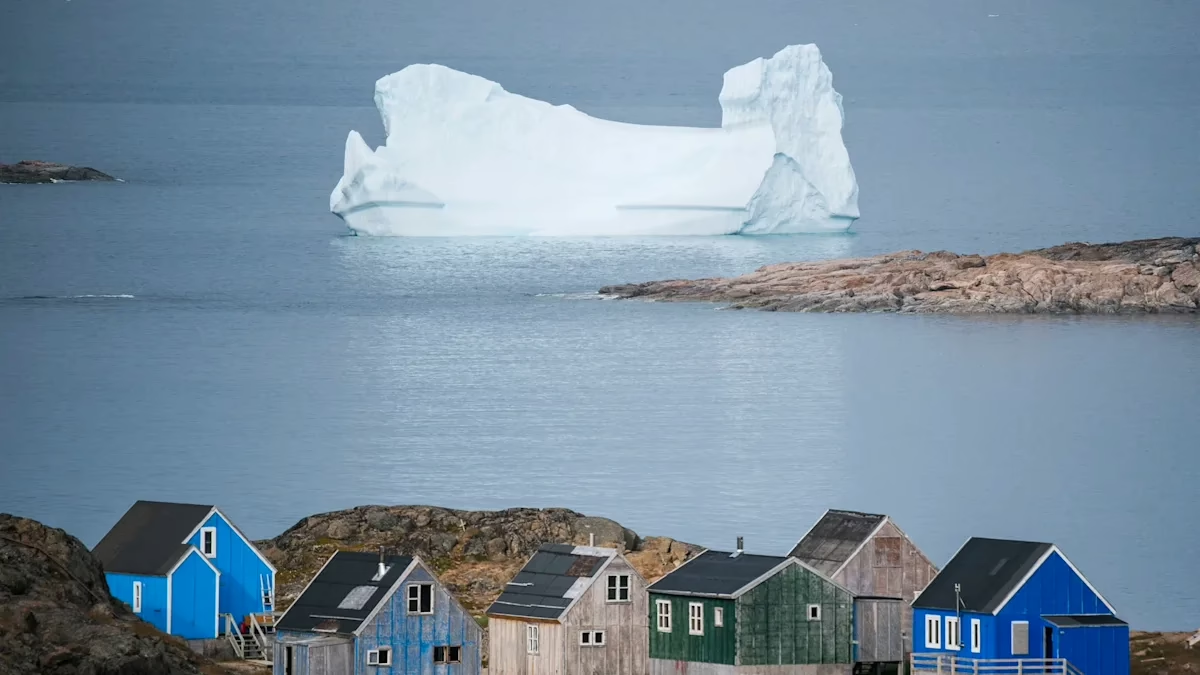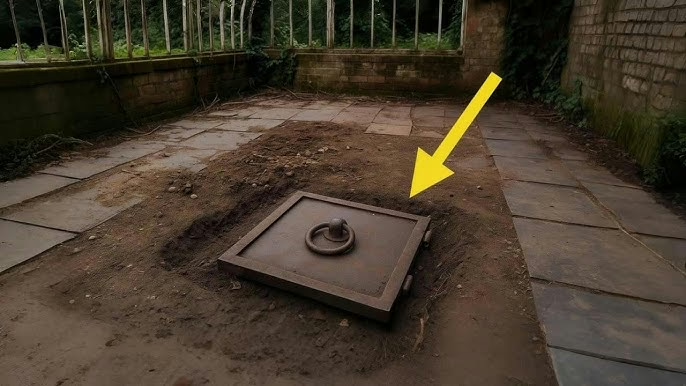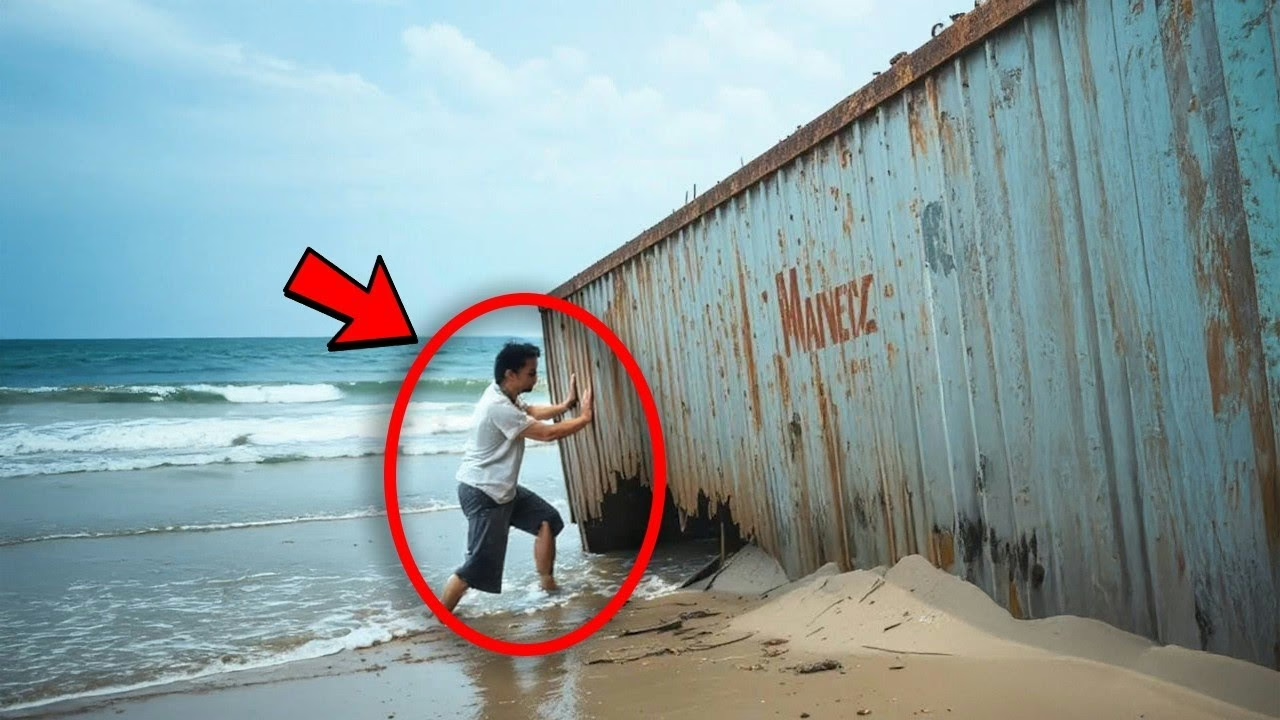The villagers of Kalluk never feared the sea.
For generations, it had been both their provider and their protector — a shimmering horizon that gave them fish, ice, and meaning.
But one spring morning, the sea itself seemed to turn against them.
The fog rolled in thick as wool, swallowing the horizon. Then came the groaning sound — deep, otherworldly, like the earth itself straining under weight. By the time the fog began to thin, the fishermen standing on the docks could see it: a massive iceberg, pale blue and fractured, drifting slowly toward the bay.
At first, it seemed harmless.
Then they saw what was on it.
And within hours, Kalluk would become the center of one of the strangest and most terrifying discoveries in Arctic history.
But before we begin, smash that like button, make sure you’re subscribed, and hit that notification bell — because what’s hidden inside this iceberg is something no one was ever meant to find.
I. The Drifting Giant
It began with the sound.
A long, low rumble that rolled through the fjord and rattled the windows of Kalluk’s wooden homes. The fishermen thought it was a glacier calving somewhere out at sea — a common enough sound in Greenland’s thawing spring. But when the fog lifted, the entire village stood still.
Floating toward them was an iceberg larger than any they had ever seen — at least 200 meters across, streaked with veins of cobalt blue. Its jagged surface caught the gray light like shattered glass. The current was pushing it straight toward the cove — a place it shouldn’t have reached.
The mayor, a former fisherman named Aput, grabbed his binoculars and squinted. Something glinted on top of the ice — metallic, angular, almost symmetrical. For a heartbeat, he thought it was a trick of the light. But as the fog cleared more, others saw it too.
“Is that… a ship?” someone murmured.
It wasn’t.
Not exactly.
II. The Shape on the Ice
Aput and a few men boarded a small motorboat and headed out toward the iceberg.
The closer they got, the more unsettling the view became. The structure embedded in the ice wasn’t a shipwreck — it was too compact, too geometric. It looked more like the hull of a small aircraft, crushed and twisted, half swallowed by the ice.
The paint — what remained of it — was a faded gray-green. Letters were faintly visible along the side: “U.S. AIR…” — and then nothing. The rest was buried beneath frozen layers.
Aput’s radio crackled.
“Do you see it?” someone asked from the shore.
He didn’t answer.
He was staring at something else — a dark, hollow section just below the wreck, exposed by melting ice.
Inside, tangled among shards of metal, was… a shape.
Human.
III. The Body in the Ice
The villagers stood silent as the rescue crew cut through the thinner layers with heated saws. Steam rose around them like ghostly breath. Beneath the translucent ice, the figure became clearer.
A man, or what was left of him, perfectly preserved in a thick coat and pilot’s headset. His skin was pale blue, his eyes closed as if in sleep. In his frozen hand, he clutched something — a small metal case.
When they finally pried it loose, they saw that it wasn’t rusted like the rest of the wreck. It was sealed tight, stamped with an emblem no one recognized — a circular crest with wings and a lightning bolt cutting through the center.
“Military?” one of the crew whispered.
“Maybe,” Aput said quietly. “But from when?”
The body was lifted carefully onto the rescue boat, along with the metal case.
The rest of the iceberg loomed silently above them, groaning as the waves licked at its base.
No one noticed, not yet, the faint trail of bubbles rising from deeper within it — or the dark hollow spreading beneath the surface.
IV. The Scientist Arrives
By evening, the discovery made headlines across Greenland.
Within 48 hours, a team of researchers from Nuuk arrived — led by glaciologist Dr. Lene Sørensen. She’d studied ice cores for twenty years but had never seen anything like this.
“This isn’t just an iceberg,” she told the press. “It’s a fragment — broken from something much older.”
Satellite scans confirmed her suspicion. The iceberg had calved from a remote glacier known as Qaleraliq, located nearly 300 kilometers north — an area marked as off-limits since the Cold War due to unstable conditions and past military activity.
The old pilot’s uniform matched designs from the 1940s. But the case he carried didn’t.
The metal was lighter than aluminum, strangely warm to the touch even in freezing air. No lock or hinge was visible. Scientists in Nuuk sent it to a secure lab for analysis.
That night, strange things began to happen.
V. The Melting
By dawn, the iceberg had drifted dangerously close to the docks.
Its underside scraped against the seabed, sending a deep vibration through the ground.
Residents were told to evacuate the waterfront, fearing the massive block might roll and trigger a wave.
But curiosity kept many on the pier.
From their vantage point, they could see that the iceberg was no longer pristine white.
Its surface was bleeding.
Thin rivulets of reddish-brown liquid seeped from cracks and fissures, staining the water below.
The smell — sharp and metallic — carried across the wind.
A fisherman scooped a jarful of the water and brought it to the mayor’s house.
By the time he arrived, the liquid inside had turned cloudy, as if something were alive inside it.
That afternoon, a government vessel arrived and sealed off the entire harbor. Scientists and soldiers moved in together.
And for the first time, the people of Kalluk realized something:
Whatever had drifted toward them wasn’t just ice.
It was a vault.
VI. The Artifact
In Nuuk, Dr. Sørensen and her team finally managed to open the pilot’s sealed metal case using a controlled laser cutter. Inside was a small glass cylinder — filled with dark sediment and something that looked like ash suspended in liquid.
“Is this a biological sample?” one researcher asked.
Sørensen frowned. “It’s not organic,” she said. “At least… not entirely.”
Under a microscope, the sediment appeared to move.
Not drift — move. Tiny filaments curled and uncurled, like tendrils responding to light. The team assumed it was bacterial. They sealed the sample back up and transferred it into containment.
That night, Sørensen awoke to the sound of alarms.
The containment unit’s temperature had dropped on its own — by exactly 12 degrees. Frost was spreading inside the sealed chamber. When she peered through the glass, the fluid inside the cylinder had changed again.
It was glowing faintly blue.
VII. The Warning
Back in Kalluk, the iceberg had begun to crack apart.
With each groan, a deep fissure opened along its center, exposing a hollow interior. Inside, villagers could see hints of machinery — long cables, pipes, and what looked disturbingly like a human-shaped chamber.
One of the crewmen — a young diver named Einar — volunteered to go closer. He strapped on his wetsuit and tethered himself to the dock.
The current was slow, the water thick with reddish melt.
As Einar swam closer to the iceberg’s base, he saw strange markings etched into the ice — not natural fractures, but geometric lines, forming patterns that resembled circuit boards.
He shone his light into the widening crack.
Something moved.
At first, he thought it was a trick of reflection. But then a pale hand — unmistakably human — pressed against the inside of the ice.
Einar screamed through his mask and kicked back to the surface, shouting for the others to pull him in.
By the time they hauled him onto the dock, his face was pale, his body trembling violently.
“There’s someone alive in there,” he gasped. “I saw their eyes open.”
VIII. The Thing Inside
News of Einar’s claim spread fast.
By morning, the military had cordoned off the entire bay and ordered all residents to evacuate inland.
Dr. Sørensen herself was flown in to inspect the iceberg before it broke apart.
Under infrared scanners, the readings made no sense.
Something was inside — a heat source buried deep within the ice, consistent with living tissue.
But it wasn’t human-sized.
It was larger. Much larger.
The iceberg’s temperature was dropping unnaturally fast, as though it were preserving something — or someone — that generated cold instead of heat.
Sørensen stood on the deck of the research vessel, staring at the iceberg through binoculars.
“This wasn’t an accident,” she murmured. “It was sealed deliberately.”
IX. The Fall of the Iceberg
At 2:37 a.m., the iceberg collapsed.
The sound was deafening — like thunder tearing through the ocean.
Sheets of ice cracked and fell away, sending waves surging toward the village shore.
Searchlights swept over the chaos, catching glimpses of something metallic tumbling out from the heart of the iceberg — a massive pod, covered in frost and symbols no one could identify.
It hit the water and began to sink.
A diver team launched immediately. But within minutes of entering the water, their communication lines went dead. When two of the divers resurfaced, they were screaming incoherently, their eyes unfocused.
They kept repeating one phrase:
“It was awake. It was looking at us.”
X. The Containment
The pod was eventually recovered — hauled out of the bay by cranes, still dripping and steaming.
Its surface pulsed faintly, as if something inside it breathed.
Under military supervision, the pod was loaded onto a transport ship and taken south to a classified facility. The official report to the public said it was an “unidentified Cold War relic.”
But those who saw it up close told a different story.
They said the metal wasn’t metal at all — it felt organic, slightly soft under touch.
And the symbols carved along its surface matched no known language, though they repeated one sequence over and over: Λ-0-3.
That was the last time the villagers saw the iceberg — or what came from it.
XI. The Aftermath
A month later, Kalluk was declared an exclusion zone.
The government claimed “unstable geological conditions,” but locals knew the truth ran deeper.
The fishermen who stayed behind began to notice changes. The tides shifted unpredictably. Their compasses spun near the bay. At night, faint blue lights shimmered beneath the water, moving slowly toward the horizon.
Dr. Sørensen resigned from her post without explanation.
Her research notes, colleagues said, were confiscated by government agents.
She disappeared two weeks later.
XII. Leaked Documents
Half a year after the event, an anonymous file surfaced online — a series of encrypted documents titled “Project Λ-03: Recovery Notes.”
Experts traced it to a corrupted server belonging to the Danish Arctic Research Division.
Inside were chilling transcripts.
Entry 14 – Nuuk Lab
“Specimen recovered from iceberg displays properties inconsistent with carbon-based life. Thermal output negative. Emits radiation similar to cryogenic plasma.”
Entry 18 – Incident Report
“Containment chamber failed at 0415 hours. Temperature dropped to -72°C within 2 minutes. Personnel reported auditory hallucinations before blackout. Specimen appears responsive to vocal frequency.”
Entry 21 – Directive
“Transfer specimen to offshore facility under Operation Deep Vault. Witnesses to be relocated. Information control protocols engaged.”
The leak went viral — but was quickly scrubbed from the internet.
Anyone reposting it received cease-and-desist letters from an unnamed legal firm representing “Arctic Environmental Defense.”
The story faded — officially.
Unofficially, it never did.
XIII. The Return
Two years later, long after Kalluk had been abandoned, a satellite passing over Greenland’s western coast captured something strange.
A new iceberg had formed in almost the same spot — larger, darker, with a perfect circular crater at its center.
Within that crater, faint blue light pulsed beneath the ice.
The satellite feed cut off moments later.
When technicians tried to review the recording, they found the data had been overwritten with static — except for one frame that survived.
In it, faint but unmistakable, was the shadow of something massive beneath the ice — a shape with long limbs, curled around a hollow core, as if protecting it.
XIV. The Last Entry
Months after the satellite anomaly, a shortwave radio operator in Iceland picked up an automated transmission repeating every 15 seconds.
The signal was faint, buried in static, but experts recognized fragments of old military code — U.S. Air Force identifiers dating back to the 1940s.
One phrase repeated clearly between bursts:
“Λ-0-3 active. Thermal breach detected.”
No one claimed responsibility for the signal.
When reporters contacted the Danish government, they denied any knowledge of “Λ-03” or the Kalluk incident.
The bay where the iceberg had drifted remains closed to this day.
No boats are allowed within ten kilometers.
No flights are permitted overhead.
And yet, every few months, fishermen from nearby settlements claim to see strange lights under the water — blue, pulsating, moving slowly southward.
As if something beneath the ice were following the current.
Waiting for the thaw.
XV. Epilogue – The Ice Remembers
In the Arctic, nothing truly dies.
The ice remembers everything — every footprint, every drop of blood, every secret man tried to bury beneath it.
When it melts, it releases them back into the world.
Scientists say the iceberg that carried the pilot and his strange cargo was over 80 years old — broken from a glacier that predated World War II.
But local Inuit elders tell a different story.
They say there have been three such icebergs before — drifting south every few generations.
Each time, something vanished after their arrival: a ship, a research crew, a radio station.
And each time, the water turned red before the ice appeared.
When asked what they think the latest one carried, one elder answered quietly:
“It was never meant for us. The sea only returned what man tried to hide.”
XVI. The Final Report (Declassified Fragment)
In 2025, a leaked memo from the U.S. Defense Archives was published by an independent journalist.
Dated March 12, 1947, it referenced a crash site near the Arctic Circle and a “biothermal entity” recovered during Operation Frigid Veil.
The memo closed with a single redacted line:
“Specimen secured in cryogenic containment. Relocation to polar facility Λ-03 approved. Maintain zero-contact protocol.”
The coordinates of the facility matched the glacier from which the Kalluk iceberg later calved.
Meaning…
It had been sealed there for almost eighty years.
And when the glacier finally broke, the ice didn’t just carry fragments of the past.
It carried the thing itself — still intact, still waiting.
XVII. The Whisper Beneath the Sea
Locals who returned to Kalluk against orders say that on quiet nights, when the wind dies and the sea freezes solid, you can still hear it — a soft, rhythmic sound beneath the ice.
Not cracking. Not shifting.
Breathing.
The government denies the existence of any “anomalous biological presence.”
But for those who live near the coast, the lights still appear every winter — deep blue, rising from below, moving closer to the surface before fading again.
No one dares go near them.
Not after what the iceberg brought.
As one fisherman put it, staring out across the dark water:
“The sea gave it back once.
Next time, it might come looking for what it lost.”




